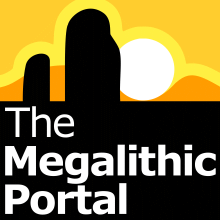Contributory members are able to log private notes and comments about each site
Sites bat400 has logged. View this log as a table or view the most recent logs from everyone
Cahokia - Mounds 30 and 31
Trip No.2 Date Added: 9th Apr 2017
Site Type: Artificial Mound
Country: United States (Great Lakes Midwest)
Visited: Yes on 1st Jan 2007. My rating: Condition 3 Ambience 4 Access 4
Log Text: None
Cahokia - Powell Mound
Trip No.2 Date Added: 9th Apr 2017
Site Type: Artificial Mound
Country: United States (Great Lakes Midwest)
Visited: Yes on 1st Jul 2008. My rating: Condition -1 Ambience 1 Access 5
Log Text: None
Cahokia - Mound 48
Trip No.2 Date Added: 9th Apr 2017
Site Type: Artificial Mound
Country: United States (Great Lakes Midwest)
Visited: Yes on 1st Jul 2007. My rating: Condition 3 Ambience 3 Access 4
Log Text: None
Cahokia - Mound 36
Trip No.2 Date Added: 9th Apr 2017
Site Type: Artificial Mound
Country: United States (Great Lakes Midwest)
Visited: Yes on 1st Jul 2007. My rating: Condition 3 Ambience 4 Access 4
Log Text: None
Cahokia
Trip No.2 Entry No.1 Date Added: 9th Apr 2017
Site Type: Ancient Village or Settlement
Country: United States (Great Lakes Midwest)
Visited: Yes on 1st Jan 2017. My rating: Condition 2 Ambience 4 Access 5
Cahokia - Monk's Mound submitted by bat400 on 10th Jul 2007. Monk's Mound taken from the SE.
bat 400. 23 June 2007.
(View photo, vote or add a comment)
Log Text: A huge, sprawling site that gives you more and more if you spend some time at both the museum and walking the huge expanse. I've visited many times starting in the mid 1990's. The earthen mounds are so large and so many in number that it's easy to become overwhelmed and a bit numb ("... oh, there's another mound ...")
Walking around the site and climbing to the top of the largest earthwork in the US, Monk's Mound, gives you an idea of the size of the site. This is a truncated pyramid with several terraces. The footprint is larger than that of the stone pyramids of Giza.
Loma del Rio Ruins
Trip No.1 Entry No.5 Date Added: 9th Apr 2017
Site Type: Ancient Village or Settlement
Country: United States (The Southwest)
Visited: Yes on 11th Jan 2010. My rating: Condition 2 Ambience 3 Access 3
Loma del Rio Ruins submitted by bat400 on 11th Mar 2010. The ruin from the southeast. On the crest of the hill you're seeing the narrow edge of the building, two rooms across. To the right, and just below, you can make out a single room, separated from the larger, six room building on the hilltop.Photo: Jan 2010, bat400.
(View photo, vote or add a comment)
Log Text: Back at the south base of the butte, make your way NW towards Mills Ave, and then walk toward the river in the north bound lane. You'll cross a scenic bridge over Tempe Town Lake. (The year round water level is maintained by the use of inflatable barriers.)
On the north side of the river, watch for a stairway on the right that takes you down on to North Loop road. Keep heading north. As you come out from under the 202 freeway and head up hill, you'll see a large open area and a trail head on the right side of the road, with a barrier to prevent cars from parking there. You are now on the SW corner of Papago Park. The walk from the butte to this point should take less than a half hour.
Take the trail east and watch for a footbridge on your left (north). Cross on this footbridge at the Indian Bend Canal, a modernized remnant of an ancient Hohokam canal. You are now on the trail to the Loma del Rio Ruin which lies at the top of the hill directly to your right. Follow the trail in a clockwise curve up and around the hill to the ruin. There is a shaded area right next to the stabilized seven room ruin.
This was an outlying Hohokam farmstead. It lies close on the elevated freeway and overhead electrical pylons. It takes a good imagination to block these modern developments out and focus on the remains of a prehistoric farm. After visiting, return to the North Loop Road the way you came. The walk up to the ruin and back to the road is about 30 minutes.
Now you can return to a light rail station to complete your journey. If you're heading back west, toward Phoenix, continue north on North Loop Road, to Curry Road. (Nearly at Curry Road, on the left, is a park with shaded picnic areas and restrooms.)
Turn left and walk west on Curry Road, across an intersection, and straight on (Curry Road becomes Washington Street at this point.) Or, if you stopped in the park, you can make your way to the same intersection by walking west through the park.
Walk west on Washington Street until you see a rail station in the median strip. The walk from the trail head on North Loop Road to the station will take about 10 minutes.
There are many other public Hohokam sites in the Valley, but most of them require a bike or car.
Hayden Butte
Trip No.1 Entry No.4 Date Added: 9th Apr 2017
Site Type: Rock Art
Country: United States (The Southwest)
Visited: Yes on 1st Jan 0000. My rating: Condition 4 Ambience 3
Hayden Butte submitted by TimPrevett on 5th Dec 2009. Hayden Butte (pronounced bute) has a lot of petroglyphs when you know where to look. All the glyphs are on sides of the mountain facing the sun (ie. south and east - as it seems is the case with most sites).
Most are recessed off the paths and are inaccesible due to wildlife and heritage preservation but can be viewed adequately from the paths, and with assistance (ie camera zoom, binoculars).
If not used to this environment, be mindful of bobcats, rattlesnakes, cacti and the temperature. It...
(View photo, vote or add a comment)
Log Text: Now make your way to the 44th and Washington rail station and travel eastbound. You'll cross the Salt River over Tempe's Town Lake. Get off at the Veterans Way / College Avenue stop at Sun Devil Stadium and Hayden Butte. The rail trip itself will take about 10 minutes.
If you walk to the east end of the station platforms and face the butte, there are trail heads to your left. The majority of the petroglyphs are on the south and east side of the butte and if you decide to walk to the top, there are views of the river valley and the extensive modern development of Phoenix and Tempe. Again, you may wish to walk only a short way up the trail or all the way to the top of the butte, taking anywhere from 30 to 90 minutes at this stop on the trip.
Next go to "Lomo del Rio Ruins". http://www.megalithic.co.uk/article.php?sid=17351.
Pueblo Grande
Trip No.1 Entry No.1 Date Added: 9th Apr 2017
Site Type: Ancient Village or Settlement
Country: United States (The Southwest)
Visited: Yes on 11th Jan 2010. My rating: Condition 2 Ambience 4 Access 5
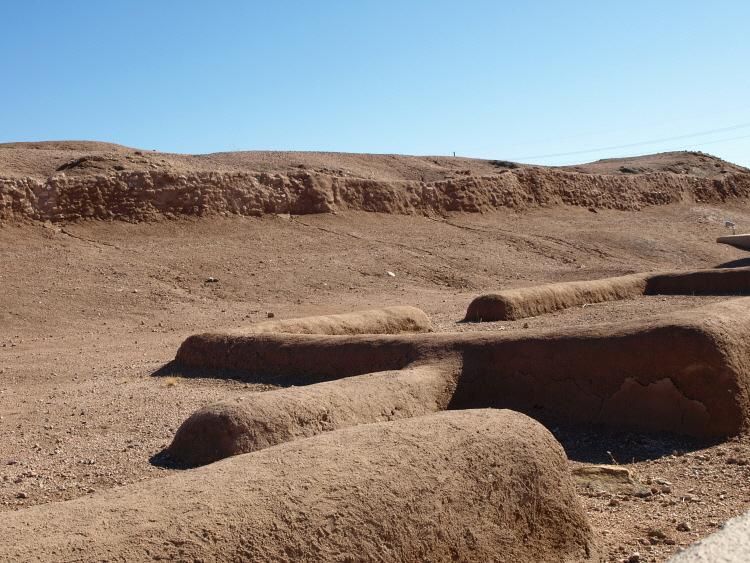
Pueblo Grande submitted by bat400 on 9th Mar 2010. The platform mound from the northwest. The remaining walls of ground level structures in the foreground.
Photo: Jan 2010, bat400.
(View photo, vote or add a comment)
Log Text: Salt River Hohokam by Public Transit and Foot.
This day trip will take you to a 1,500 year old ruin of a Hohokam village, Pueblo Grande, a butte where the Hohokam left petrogyphs, and the ruin of a Hohokam farmstead - a "suburb" of Pueblo Grande. All the sites are accessible by public transportation and walks on either city streets or maintained trails. The trip could take as little as two and a half hours or as much as five hours, but four hours touring time is a reasonable estimate if you want to fully enjoy the museum and each site.
Start at Pueblo Grande site and museum at the SE corner of Washington and 44th Street, Phoenix. On the SW corner is a [url=www.valleymetro.org/]Valley Metro[/url] light rail station, accessible by bus in the Valley Metro system. A free shuttle bus from the Phoenix Sky Harbor Airport also runs to this station regularly from early morning to late evening. I made this trip as part of a planned, 6 hour layover at the airport.
Pueblo Grande is one of the main accessible Hohokam village or town sites. The prehistoric Hohokam (1AD - 1450AD) lived in central and southern Arizona. They farmed corn, beans, squash, and cotton and are best known for their water management skills. Prior to modern reservoir systems, the Salt River flowed year round and the Hohokam built and maintained irrigation systems. Along these abandoned canals the remains of their villages and extended homesteads were found by historic Europeans. Many of the canals were so well laid out that the new pioneers often followed and simply renewed prehistoric canals to supply their own fields. The Hohokam built their villages in adobe, regularly centered around platform mounds and ballcourts. Drought, floods, and possible internal conflict caused the Hohokam to abandon the Salt River Valley in the 1400's. The historic Akimel O'odham (Pima) people are the most likely descendants of the Hohokam.
The museum on site explains the irrigation systems and describes how Pueblo Grande extended over a much larger area than is preserved today.
A visit to the Pueblo Grande site can take 1-2 hours depending on your level of interest.
Now go to "Pueblo Grande - Ball Court". [URL=http://www.megalithic.co.uk/article.php?sid=15417]http://www.megalithic.co.uk/article.php?sid=15417[/URL].
Pueblo Grande - Ball Court
Trip No.1 Entry No.2 Date Added: 9th Apr 2017
Site Type: Ancient Village or Settlement
Country: United States (The Southwest)
Visited: Yes on 11th Jan 2010. My rating: Condition 2 Ambience 3 Access 5
Pueblo Grande - Ball Court submitted by bat400 on 9th Mar 2010. The south half of the ball court. Photo: Jan 2010, bat400.
(View photo, vote or add a comment)
Log Text: The ball court is on the grounds of Pueblo Grande.
Next go to "Pueblo Grande - Park of Four Waters".
[URL=http://www.megalithic.co.uk/article.php?sid=16941]http://www.megalithic.co.uk/article.php?sid=16941[/URL].
Petroglyph Nat. Mon.
Date Added: 24th Jan 2016
Site Type: Rock Art
Country: United States (The Southwest)
Visited: Yes. My rating: Condition 3 Ambience 4 Access 3

Petroglyph Nat. Mon. submitted by mfrincu on 17th May 2015. Human figures at Piedras Marcadas in Albuquerque.
(View photo, vote or add a comment)
Log Text: None
Columbia Hills State Park
Date Added: 11th Oct 2015
Site Type: Rock Art
Country: United States (The West)
Visited: Yes on 1st May 2013. My rating: Condition 3 Ambience 4 Access 4

Columbia Hills State Park submitted by Flickr on 29th Sep 2015. She Who Watches Petroglyph Image copyright: Lorene Flaming, hosted on Flickr and displayed under the terms of their API.
(View photo, vote or add a comment)
Log Text: There were no tours to the "She Who Watches" figure on the day we were visiting, but we were able to see many other examples of rock art. Well worth a visit.
Mangum Mound
Date Added: 11th Sep 2015
Site Type: Artificial Mound
Country: United States (The South)
Visited: Yes. My rating: Condition 3 Ambience 3 Access 5

Mangum Mound submitted by bat400 on 4th Sep 2012. Magnum Mound.
Photo by bat400, October 2011.
(View photo, vote or add a comment)
Log Text: None
Natchez Trace
Date Added: 11th Sep 2015
Site Type: Ancient Trackway
Country: United States (The South)
Visited: Yes. My rating: Condition 2 Ambience 4 Access 4

Natchez Trace submitted by bat400 on 6th Sep 2012. A portion of the original Trace. When the trail passed through areas of soft soils, or places where the trail itself was easily flooded, the trail is sunken, sometimes for miles.
Photo by bat400, October 2011.
(View photo, vote or add a comment)
Log Text: None
Tendal Mound
Date Added: 11th Sep 2015
Site Type: Artificial Mound
Country: United States (The South)
Visited: Yes. My rating: Condition 2 Ambience 2 Access 5
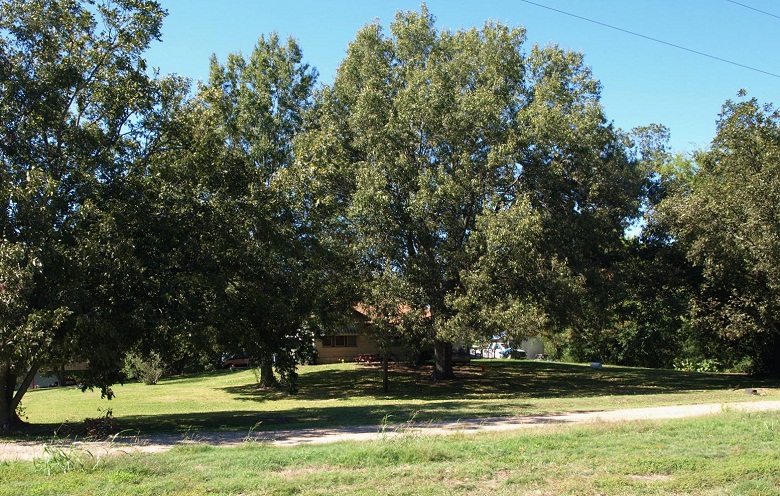
Tendal Mound submitted by bat400 on 29th Aug 2012. Tendal Mound taken from the east side, showing how the modern house was built in the approximate center of this low platform mound.
Photo by bat400, Oct 2011.
(View photo, vote or add a comment)
Log Text: None
Indiana State Museum
Date Added: 21st Aug 2015
Site Type: Museum
Country: United States (Great Lakes Midwest)
Visited: Yes on 1st Feb 2014. My rating: Condition 5 Ambience 4 Access 5
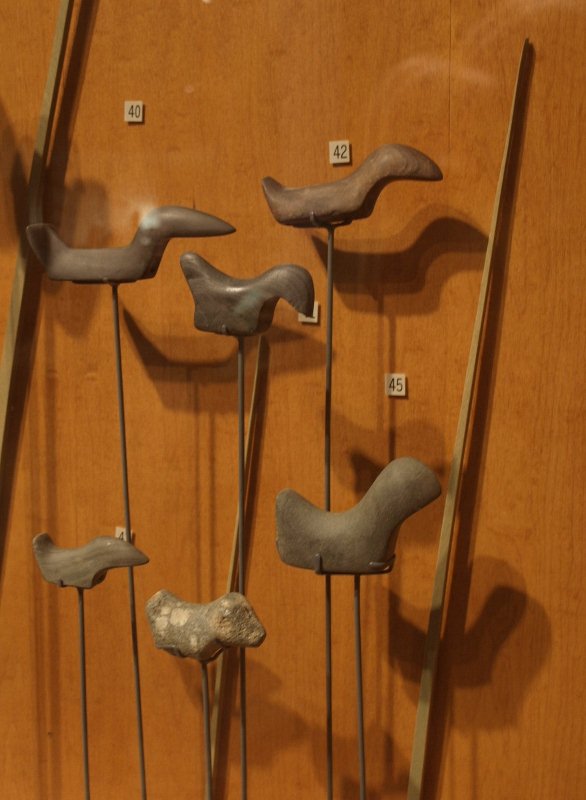
Indiana State Museum submitted by bat400 on 22nd Aug 2015. Bird Stones. Most are two to five inches long. They are relatively rare artifacts from the Archaic period and generally found in the eastern half of North America.
Indiana State Museum. Photo by bat400 ca. 2013.
(View photo, vote or add a comment)
Log Text: Not an anthropology museum per se, and fairly pricey if your only interest are the galleries on the first people who lived in this region between the last Ice Age and European-contact. However, if you were flying into Indianapolis to visit the area, the collection would be a good introduction prior to visiting sites like Angel Mounds, Mounds State Park and particularly, other smaller locations without on site information.
Other galleries are more spectacular, including the collection of early marine life forms preserved in the extensive limestone deposits of Indiana.
Beattie Park Mound Group
Date Added: 5th May 2015
Site Type: Misc. Earthwork
Country: United States (Great Lakes Midwest)
Visited: Yes on 4th Dec 2014. My rating: Condition 3 Ambience 4 Access 5

Beattie Park Mound Group submitted by bat400 on 5th May 2015. Linear Shaped Mound in the Beattie Park Mound Group. Photo taken in November 2014 at dusk.
Photo by bat400.
(View photo, vote or add a comment)
Log Text: Pleasant small city park along the Rock River is the location of these mounds, one a turtle effigy. Signage describes the mounds and historic information on how they were preserved. Parking nearby
Circleville
Date Added: 9th Mar 2015
Site Type: Misc. Earthwork
Country: United States (Great Lakes Midwest)
Visited: Yes. My rating: Condition -1 Ambience 2 Access 5
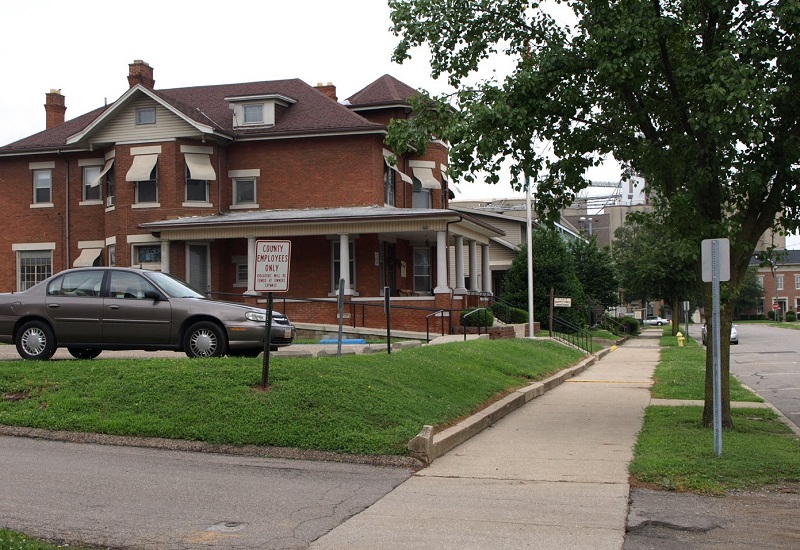
Circleville submitted by bat400 on 21st Jan 2013. Local historian Wallace Higgins suspects that the slight rise on the south side of Franklin Street may be the remnant of the square earthwork.
Photo by bat400, August 2011.
(View photo, vote or add a comment)
Log Text: None
Portsmouth Earthworks
Date Added: 9th Mar 2015
Site Type: Misc. Earthwork
Country: United States (Great Lakes Midwest)
Visited: Yes. My rating: Condition 2 Ambience 3 Access 5

Portsmouth Works submitted by durhamnature on 21st Feb 2013. Old plan of the works, from "Prehistoric America" via archive.org
(View photo, vote or add a comment)
Log Text: None
Maryhill Stonehenge
Date Added: 16th Jul 2013
Site Type: Modern Stone Circle etc
Country: United States (The West)
Visited: Yes on 16th Jul 2013. My rating: Condition 5 Ambience 4 Access 5

Maryhill Stonehenge war memorial submitted by stonetramp on 16th Oct 2007. Built by Sam Hill as a tribute to the soldiers of Klickitat County who lost their lives, Maryhill's Stonehenge is the first monument in our nation to honor the dead of World War I. The structure is a full-scale replica of England's famous neolithic Stonehenge. A Quaker pacifist, Hill was mistakenly informed that the original Stonehenge had been used as a sacrificial site, and thus constructed the replica to remind us that ''humanity is still being sacrificed to the god of war.'' The location now...
(View photo, vote or add a comment)
Log Text: None
Aztalan State Park
Date Added: 31st Mar 2013
Site Type: Ancient Village or Settlement
Country: United States (Great Lakes Midwest)
Visited: Yes on 1st Jul 2010. My rating: Condition 3 Ambience 4 Access 4
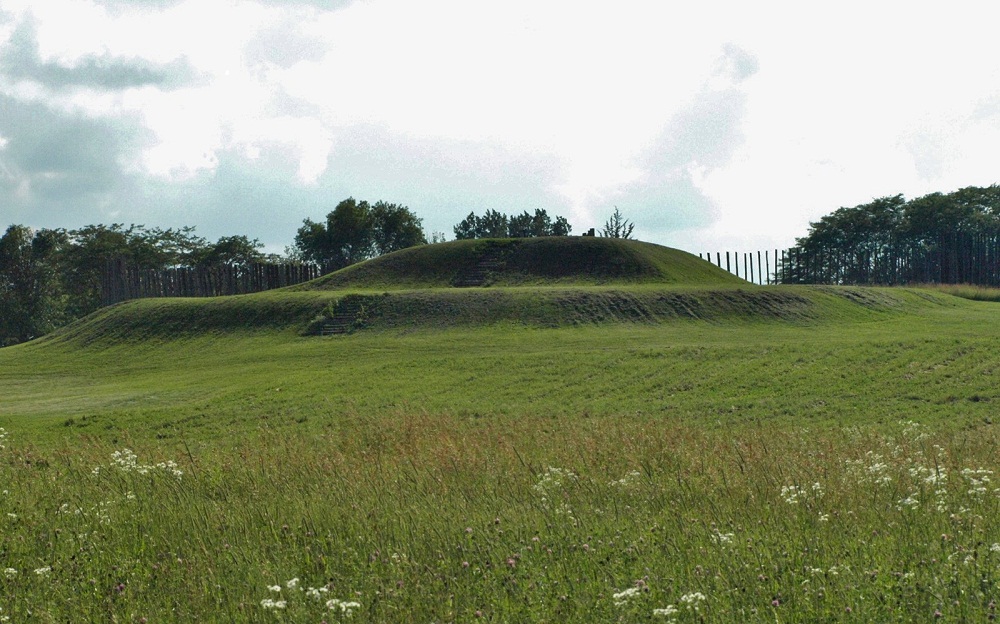
Aztalan State Park submitted by bat400 on 31st Mar 2013. The largest mound at Aztalan is a "stepped" pyramidal structure in the southwest corner of the stockade surround.
This is a partial reconstruction of the site as found in the early 1800's. By the 1920's there had been substantial plowing of the site and significant damage by "pot hunters" and those simply "quarrying" the mounds for fill dirt and the remains of burnt wattle and daub from the original stockade.
Photo by bat400, July 2010.
(View photo, vote or add a comment)
Log Text: A Cahokia in miniature. Site interpretation is quite good considering that the park is not monitored for much of its opening times (basically dawn to dusk, daily.) At the parking area, a brief guide to the site is available at an honesty box. Placards around the site describe the ruins and reconstructions visible, as well as archaeological findings.
When I visited (late in the day on a Sunday) the small museum was unmanned.
